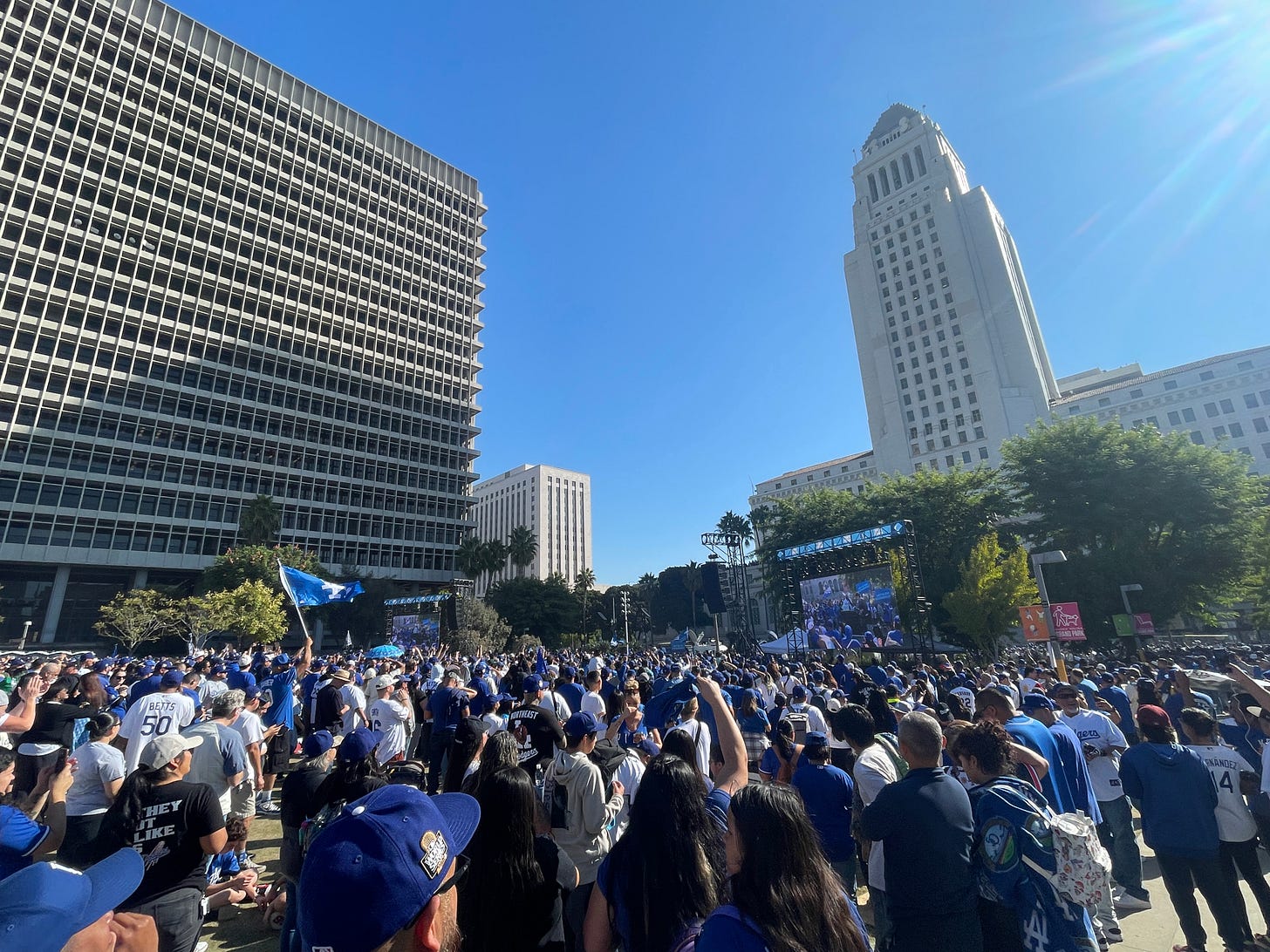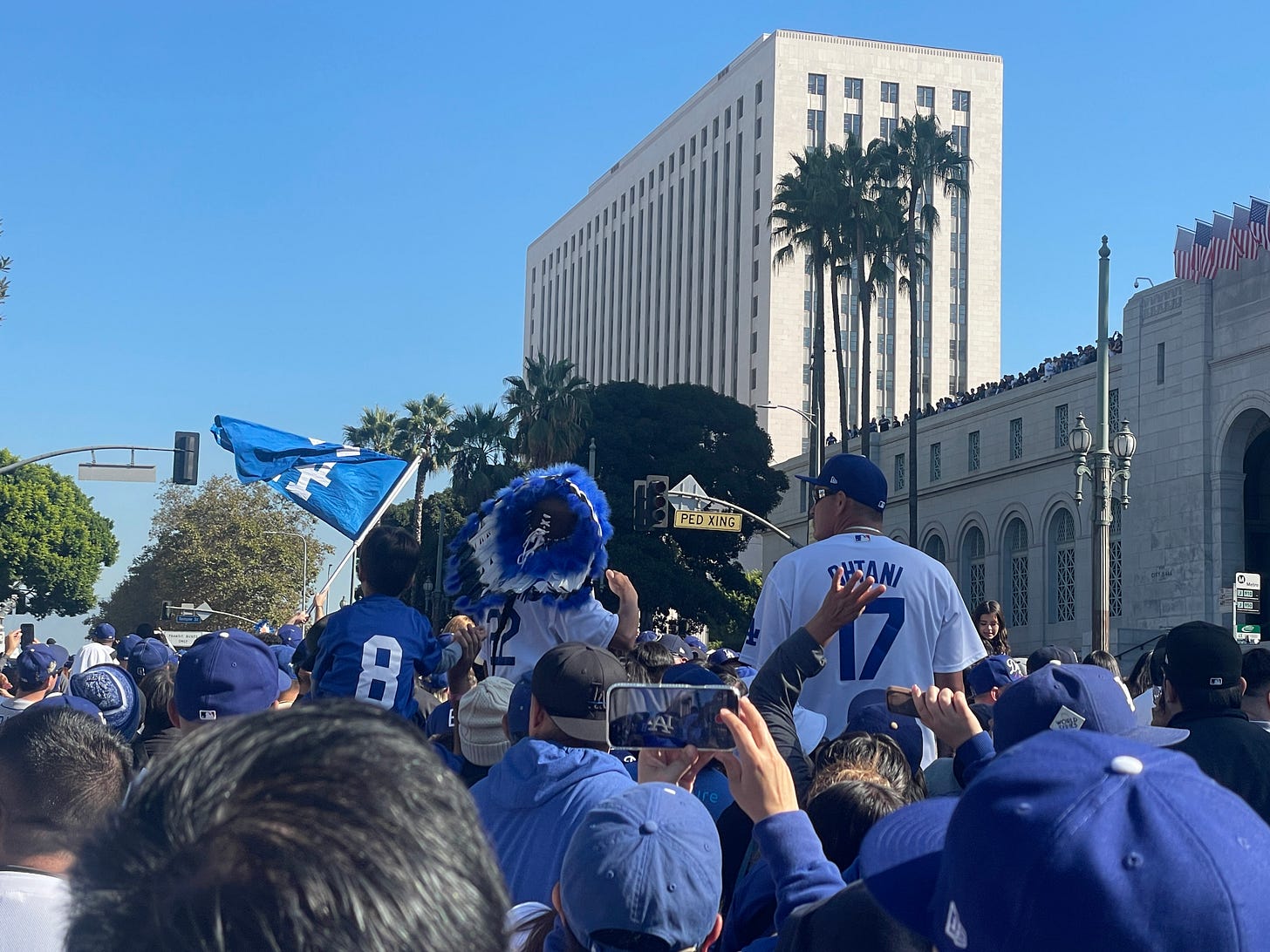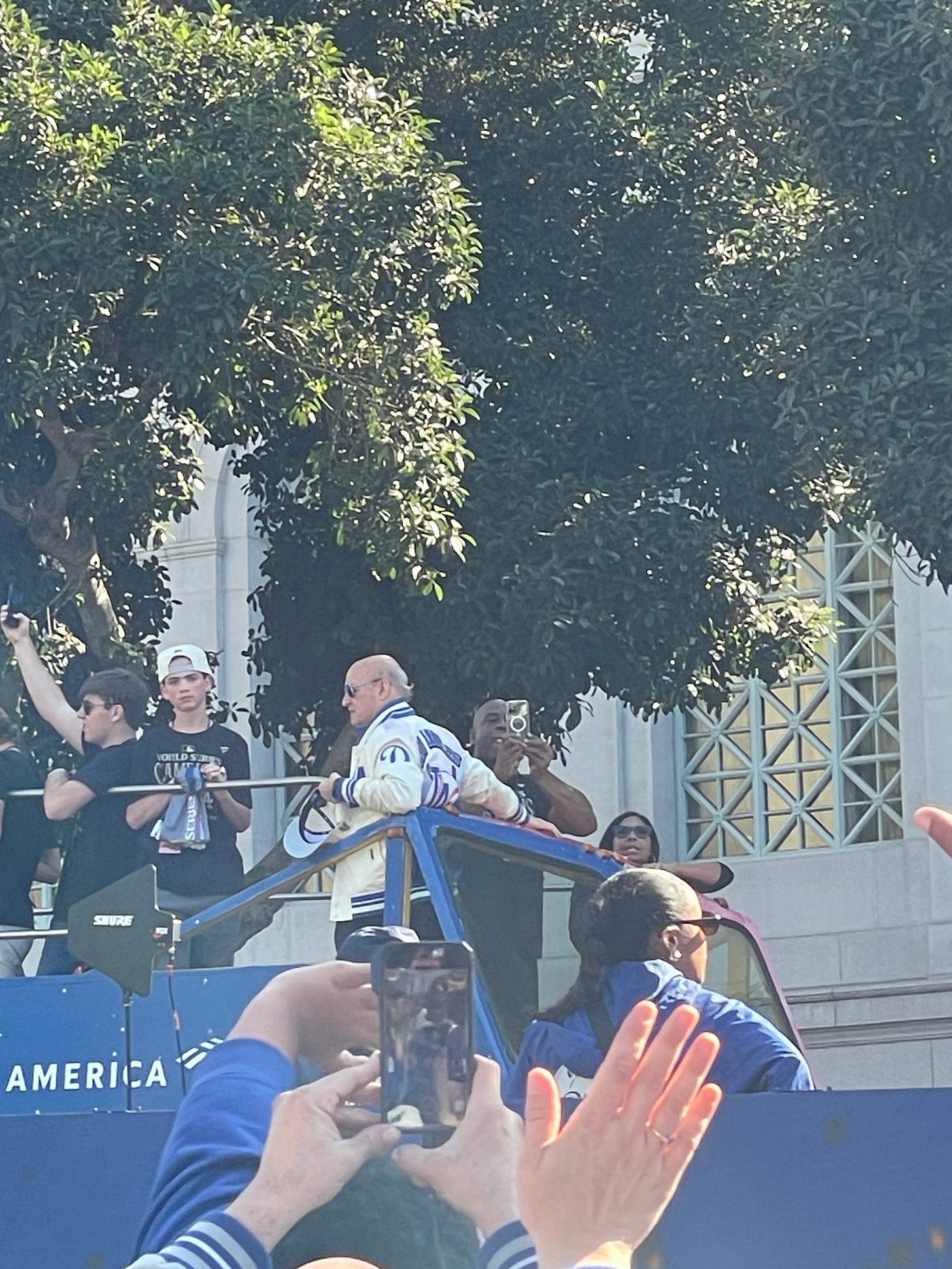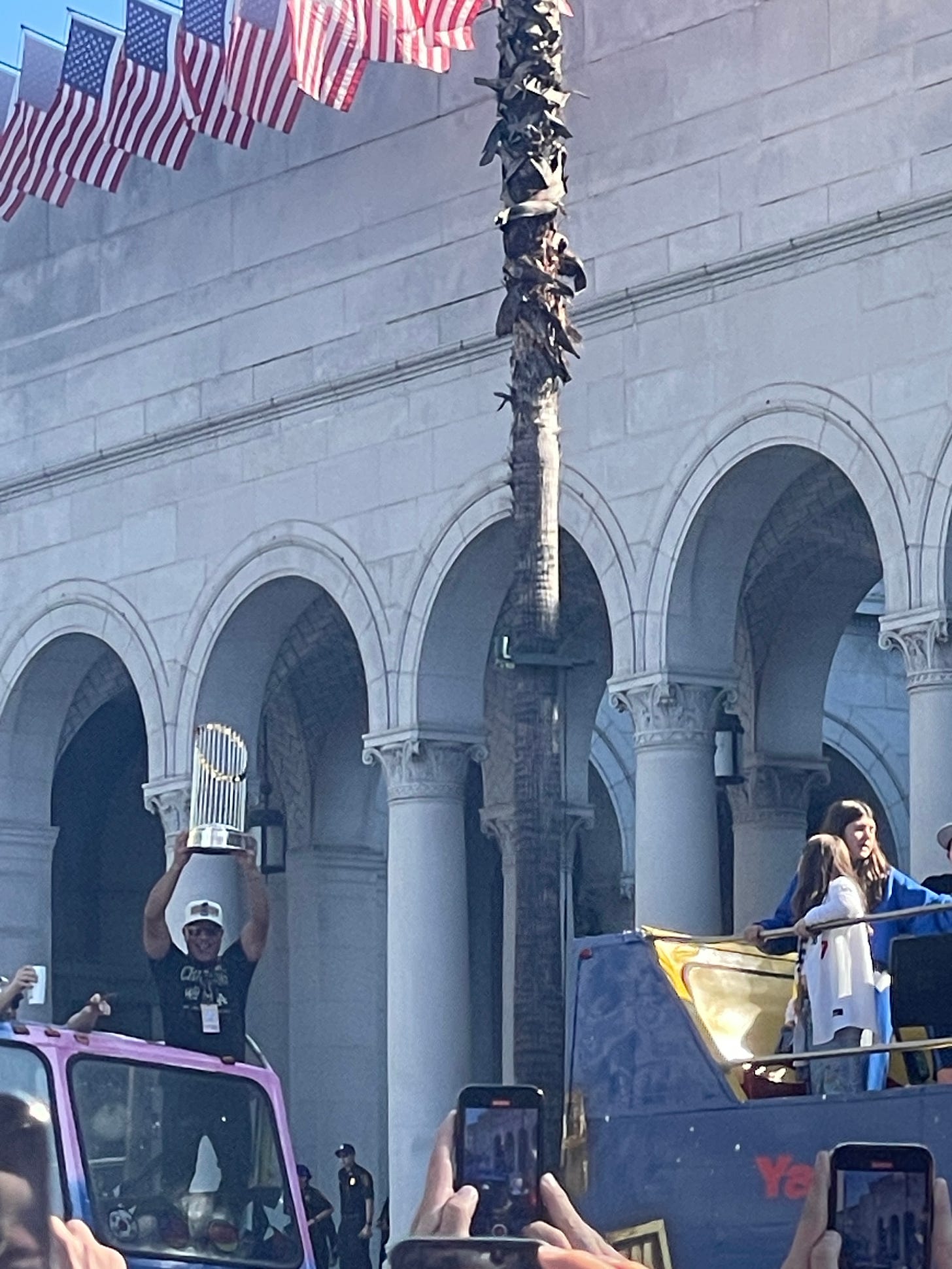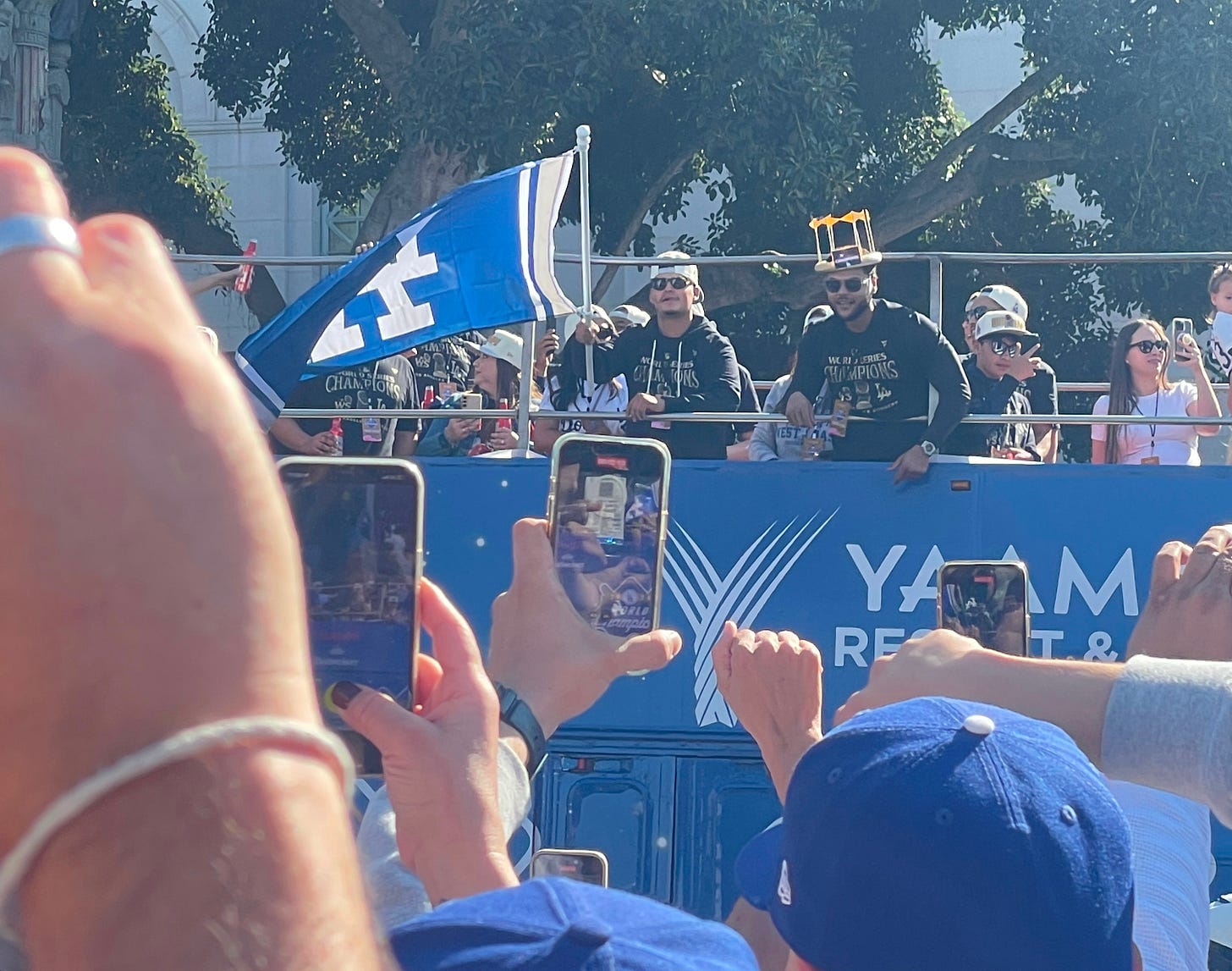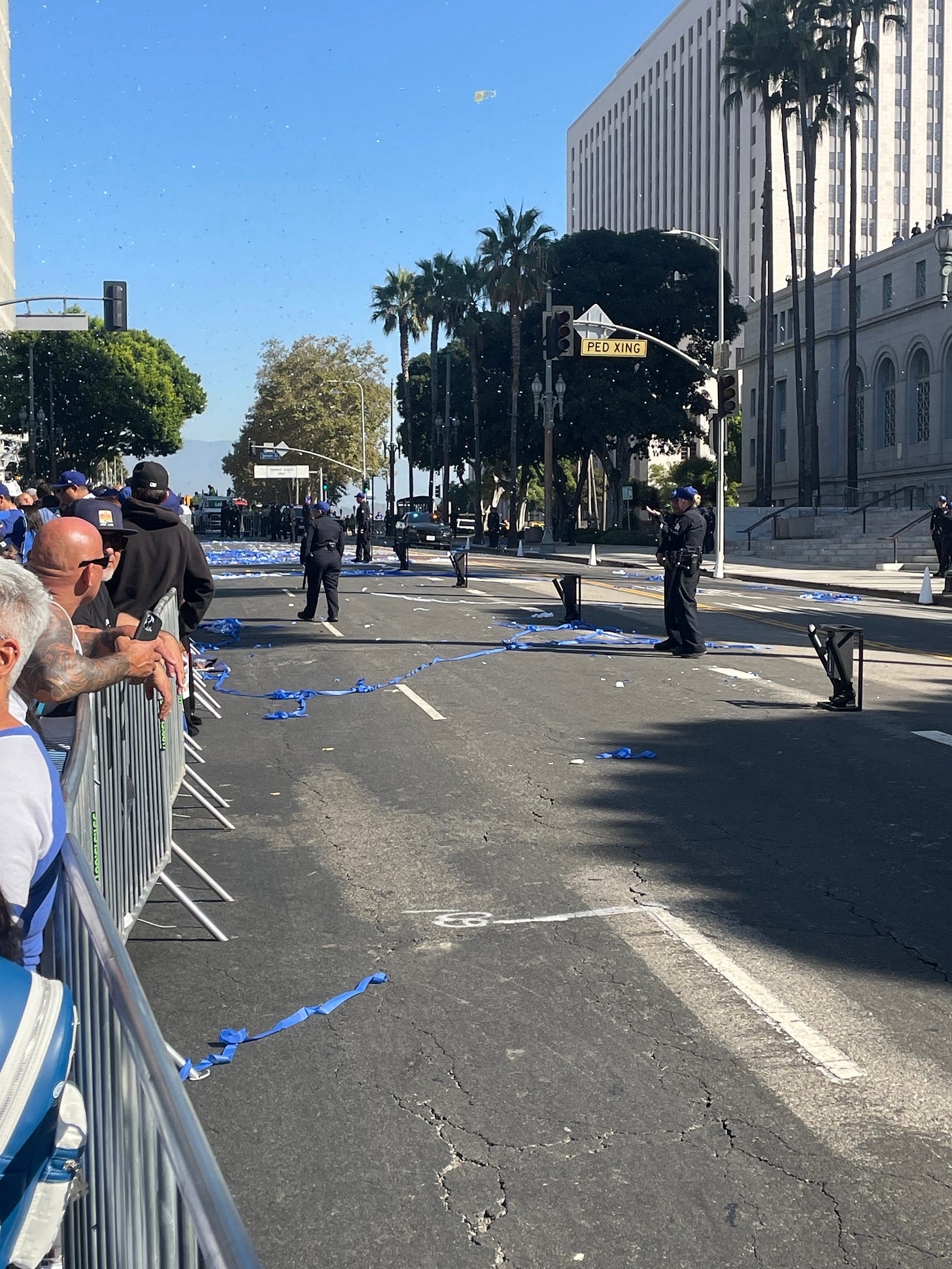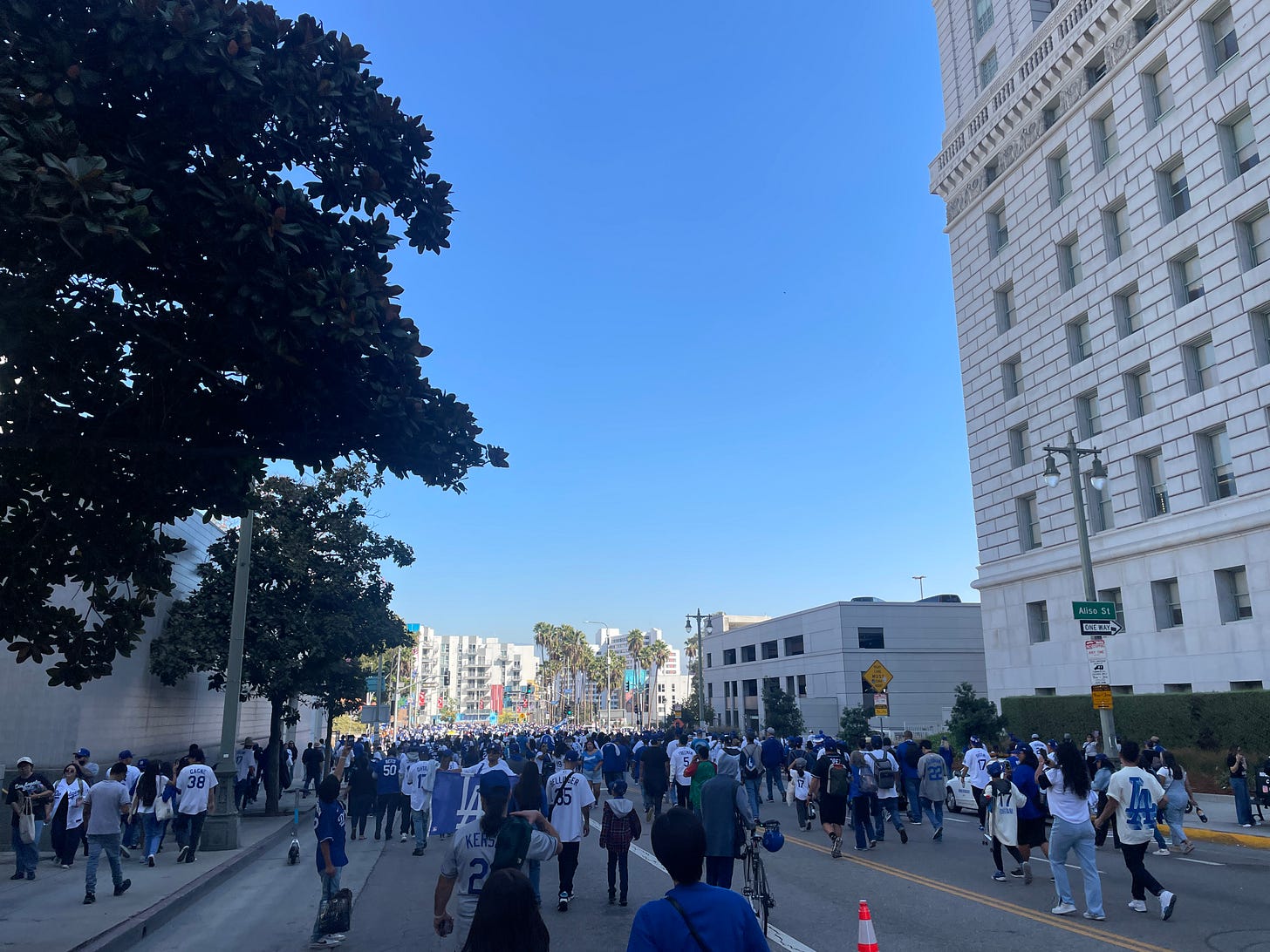That One Day LA Was a Real City for the Dodgers' World Series Parade
I chronicle my trip to the LA Dodgers' World Series Parade, reflecting on the Southern California metropolis becoming a real city for a day.
Note: In honor of Opening Day for Major League Baseball (MLB), I am bringing you a photo essay of my trip to the Los Angeles Dodgers’ World Series Parade this past fall and its connection to urbanism.
There’s an old derisive quote attributed to writer Dorothy Parker: "Los Angeles is 72 suburbs in search of a city." This sprawl means much of the metropolis is designed for cars and drivers. But when the LA Dodgers won the World Series in 2024, the city and team strongly encouraged people to take public transport to the parade and celebration.
I took that challenge because I’m a sicko who loves public transit and urbanism. I was curious whether the rest of the city would do the same. To my surprise, so many other people did the same that day. Approximately 300,000 fellow Angelinos made the same trek.
10 AM - Beginning the Trek
I am stretching the truth by calling myself an “Angelino” here. I actually live in deep Orange County, taking the aptly named Orange County Line directly into LA’s Union Station (approximately a one-and-a-half-hour ride). For you East Coasters, I am the Southern California equivalent of the bridge and tunnel crowd. At each station, more and more Dodger Blue poured into the train.
I was even surprised to see that people were bringing their bikes onto the train. LA has perfect weather for biking, but a precarious landscape that can be quite dangerous without proper infrastructure. I have no idea how these guys fit onto the already crowded train, though.
12:25 PM - Train Arrival
Just waiting to exit the platform and the atmosphere was already electric: fans drinking beers, chanting, high-fiving each other, simply celebrating. Kendrick Lamar’s “Not Like Us”, which became the team’s postseason anthem, blasting on Bluetooth speakers, along with other So Cal favorites like Randy Newman’s “I Love L.A.” and the entire catalog of early 90s West Coast rap.
Despite the mass of people and the slow lines, no one was angry. We were all just taking in the scene together. I couldn’t help but think how annoying this would have been if all of us were instead sitting in cars. A long traffic line isn’t festive; it’s frustrating and maddening. Part of the magic that day in LA came from being outside of our cars for a change.
I loved the multigenerational families who were at the parade. I hope kids like this one remember this day for the rest of their lives, inspiring them to rethink LA’s public transportation to taste that magical movement again.
I had to stop for a second to take in the beauty of LA’s Union Station. It is a reminder that we used to build temples for the people. It comes from another era that respected public space. I am glad it survives. That day, Union was more than surviving, it was thriving. We need more days like it.
Of course, this is still LA, so as thousands of people poured out of the station, we had to wait in a long line at the streetlight for all the passing cars to go by. Like I said, though, this was infinitely better than being one of those people sitting in those cars. In a role reversal of normal LA, it was us pedestrians pitying the drivers that day.
Aside from the kids, I also noticed the true scope of LA’s multiracial and ethnic neighborhoods all converging together: from Inglewood to Boyle Heights, Monterey Park, and the rest of us from the likes of Orange County.
One of the things that made LA feel like a real city that day was that they closed off huge sections of the street to cars. The streets belonged to the people that day, not the cars. It was finally a pedestrian paradise. No need to worry about some bozo TikToking while slamming through a stop sign.
12:50 PM - The Parade Spot
While I was thinking about public transport and urbanism, most people (249,999 of the 250,000 attendees) just wanted to see the parade and celebrate.
1:15 PM - Parade Begins
All the pandemonium around me was for one thing: the parade. What an experience to be in the middle of it.
1:30 PM - Parade Ends (But the Party Doesn’t)
It might be surprising that the parade really only lasted for about 15 minutes. So hundreds of thousands of people descended upon LA just for a precious few minutes? Yes, and it was worth it. Plus, the party didn’t stop there.
One of the funniest scenes was when the mass crowd stopped on a freeway overpass. They were swinging flags and chanting at the cars driving by who would honk in support. It was like a religious ceremony where we had to make an offering to the sacred highway that we all worship the rest of the year.
Much of the crowd continued the celebration in bars, restaurants, and other businesses after the parade. We should use this day to convince businesses that taking away parking and making things more walkable/bikeable can actually bring in customers.
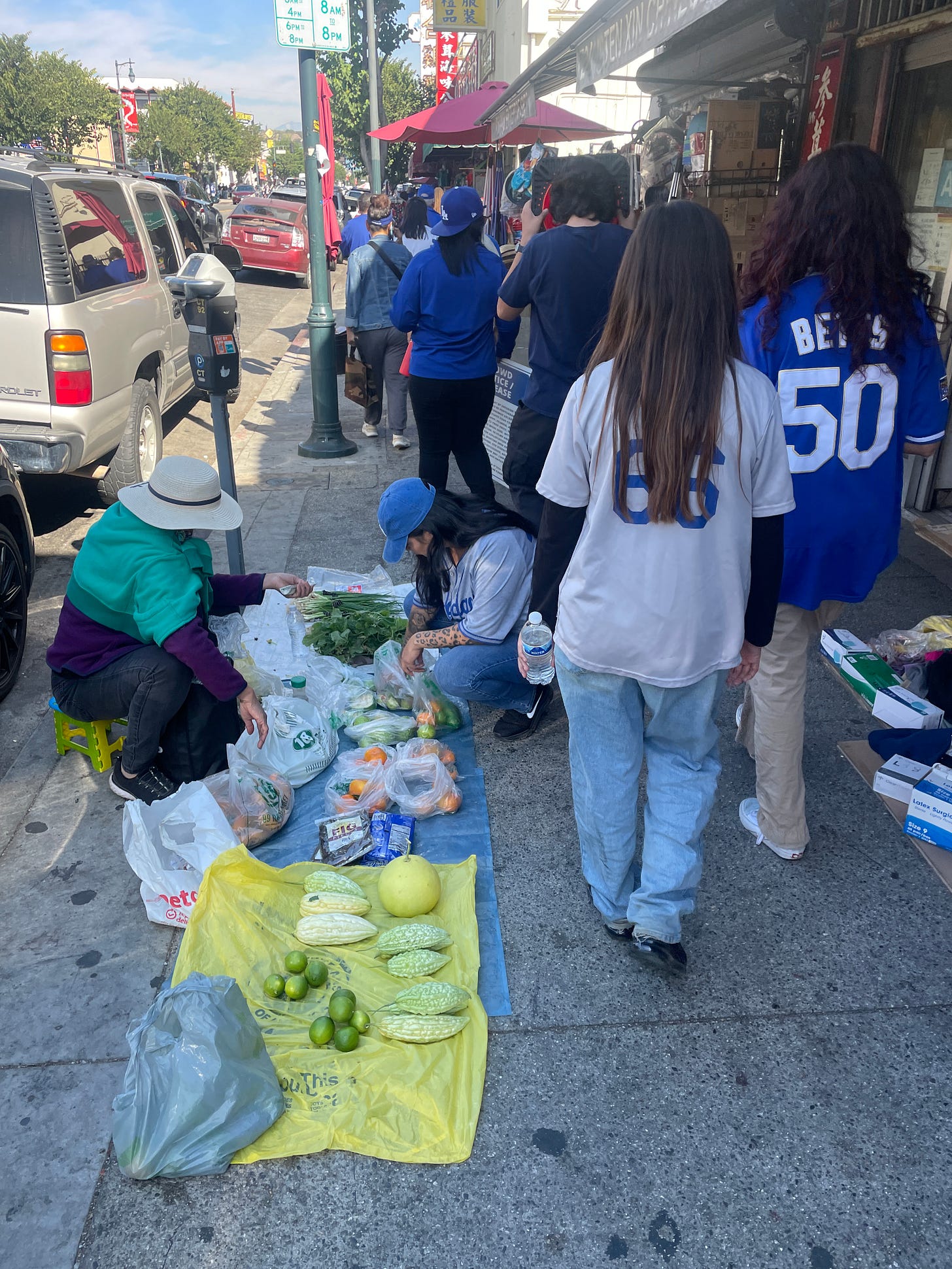
We walked to Chinatown to eat at one of our favorite LA spots: Howlin' Ray's. Every restaurant in this hawker complex was packed with Dodger Blue. It didn’t seem like people minded the long lines. The festive scene of the parade had not yet worn off.
4:20 PM - Heading Back Home
After eating (and visiting a couple of other spots like a museum that I left out of the essay for brevity), our day was nearing completion. We were calling it early relative to the masses who were still out celebrating. Bikes, kids, and masses mix well when we remove cars.

Back to the reality of Orange County, the reality of Southern California, the reality of one of the 72 suburbs in search of a city. At least for that day, we did actually find a city. It turns out that it was LA all along. May we find it again one day.












